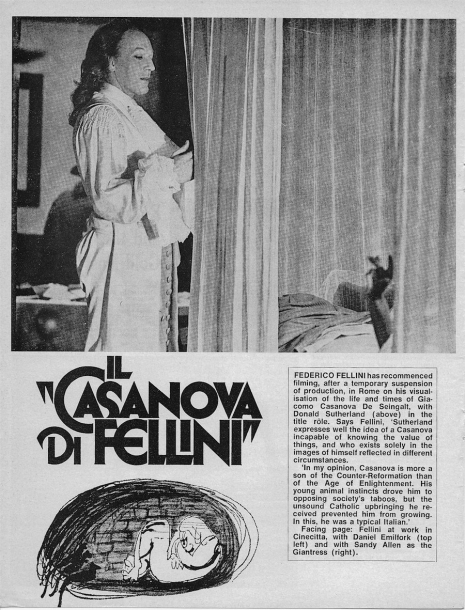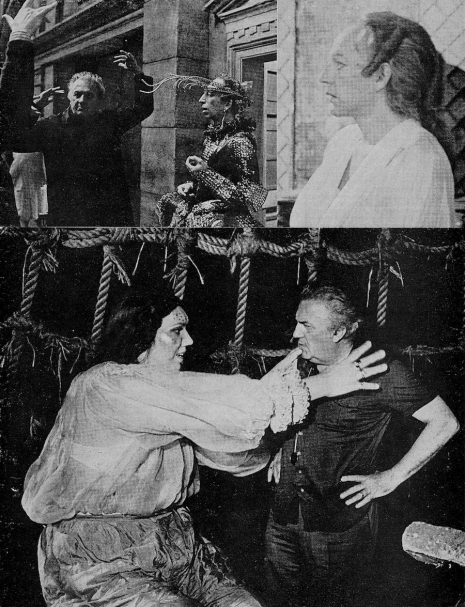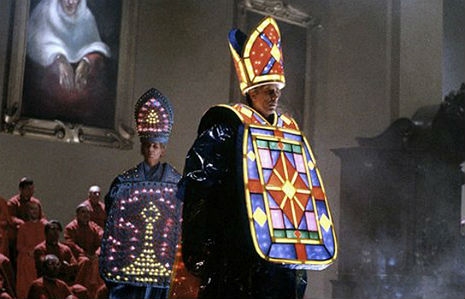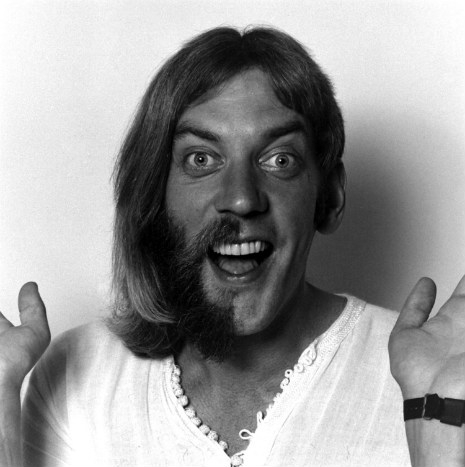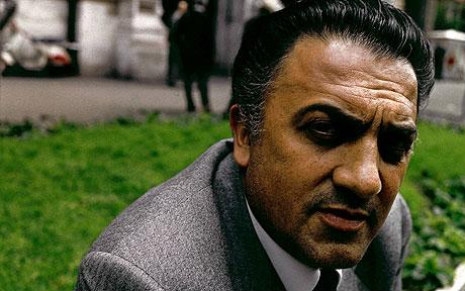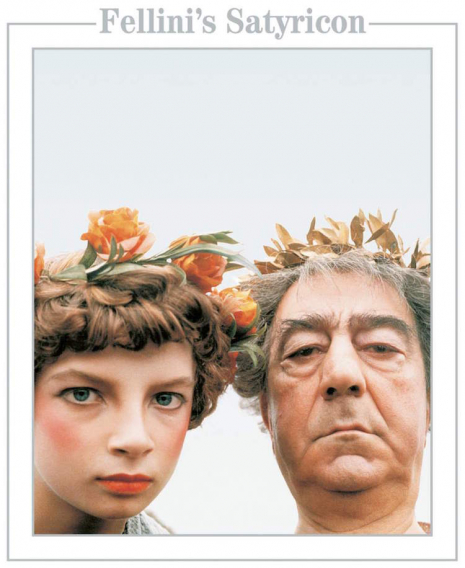
In 1968, Federico Fellini decided he was going make the greatest homosexual movie ever made. What he meant by a homosexual movie, no one was quite sure, but it was going to be great. In fact, it going to be the greatest homosexual movie ever, or so Fellini kept telling anyone who would listen.
Fellini was living it large with the international success of La Dolce Vita, 8½, and Juliet of the Spirits. He was now described by some critics as “the greatest living director.” What Alfred Hitchcock thought of this news, no one knows, but Fellini was not going to disagree. He travelled to America where he was fascinated by the rise of hippie culture, free love, and young boys with long hair who looked like girls. It was the Age of Aquarius, the hippies told him. Fellini was an Aquarian, born on the 20th of January 1920. He was superstitious and believed what he was told. This was then was the Age of Aquarius—his time. Who was he to disagree?
The subject matter for his new film was the first century story Satyricon by Gaius Petronius written during the reign of Emperor Nero. Petronius fell foul of Nero and was accused of treason. To avoid one of Nero’s gruesome executions, Petronius cut his own wrists, bound them up, then picked at them during a dinner with friends until he inevitably bled to death. Much of Petronius’ original text for Satyricon had been lost but this did not concern Fellini, as he was more interested in imagining what had happened in those missing gaps. This was not going to be Petronius’ Satyricon but Fellini’s Satyricon. It was the first time the director’s name appeared before the title of his film.
Satyricon told the story two young streetwise punks Encolpius and Ascyltus and their mutual lust for a boy Gitón. The pair fall into various misadventures before Ascytlus is killed and Encolpius abandons his lustful ways for a more-considered life.
Author Paul Gillette set the scene for Fellini’s movie in his introduction to the film-tie-in book of Satyricon:
Imperial Age Rome was a cesspool of vice and carnality. The leisure classes, having been turned from power, devoted themselves exclusively to the pursuit of pleasure. Marriage was regarded as a mere formality, more often than not ignored; bisexuality was considered the most desirable state of sexual appetite, the term being equated with ‘sexual completeness.’
When a boy attained the age of reason, or as soon as possible thereafter, his parents would seek to place him under the tutelage of a young man who had proved himself learned and wise in the ways of the world. It was the function of this wise young man, called a “mentor,” to teach the boy all worth knowing—not the least worthy of which was sex. At the same time that the lad was being taught logic, literature and numbers, he was being introduced to sexual experience in the form of manual, anal and oral contact with his mentor. When it was thought that he was sufficiently prepared, the boy was introduced to the heterosexual world; thenceforth, he was free to do as he chose. The same master-apprentice relationship existed among females.
Petronius’ tale was a scandalous satire on this world, poking fun at the people and their loose morals and practices.
Fellini saw a parallel between mid-first century Rome and the 1960s. But although this was a time of free love, rock concerts, and students rioting on the cobblestone streets of Paris, Fellini wanted an older, respected bunch of actors to appear in his movie. He called Danny Kaye and summoned him to the Cinecitta Studios. The versatile song-and-dance comedian arrived at Rome airport without the slightest idea what Fellini wanted, other than he wanted him to star in his next movie. Over lunch, Fellini told Kaye, he didn’t want him as the star but rather the villain of the piece, Lichas—a murderous gay transvestite pirate and mortal enemy of the story’s narrator Encolpius. He kidnaps Encolpius to keep as his catamite then marries him while dressed as a bride. Kaye baulked at the idea. This wasn’t the kind of family entertainment that had made him famous.
Taking on such a role might bring unwanted attention to Kaye’s private life. Kaye was bisexual and had a long-term relationship with Laurence Olivier. According to biographer Donald Spoto, Kaye once organized for Olivier to be stopped on entry to the US at New York airport. Kaye had disguised himself as a customs officer. He then allegedly carried out an intense cavity search on the noble Shakespearean actor, before revealing his true identity.
After his meeting with Fellini, Kaye quickly returned to America. Less said, soonest mended. Yet, seven years later, Kaye did play a dubious pirate with an obsessive interest in children, when he starred as Captain Hook against Mia Farrow’s Peter Pan. Perhaps Fellini had been right in his choice of Kaye. The role eventually went to French actor Alain Cuny.

Undeterred, Fellini told the press he would cast Mae West, Groucho Marx, Jimmy Durante, Van Heflin, Boris Karloff, and Michael J. Pollard. No one was going to stop the great Fellini from making his movie. But Groucho Marx said “No.” Durante said “What?” Mae West turned the offer of playing a sex mad high priestess and mother figure down as she didn’t like the idea of being a “mother figure.” Boris Karloff was interested but too busy, perhaps a day or two in May?. Pollard said “Yes,” but nothing came of it.
Fellini even appeared on TV stating he was going to cast the Beatles. While this would have certainly been a more interesting film to make than the folly of The Magical Mystery Tour, the question was: which Beatle would play which role? Would McCartney be the young love interest Gitón? Would Lennon be Encolpius? Harrison Ascyltus? And what about Ringo? The suggestion captured the media’s imagination. Fellini added that he hoped the Beatles would write the score for the movie. Meanwhile, back in London, the Beatles’ press office said they knew nothing of any proposal for John, Paul, George, and Ringo to star in any great homosexual movie, Fellini’s or otherwise.
The novelist Henry Miller watched Fellini’s performance on television and noted the director was merely improvising—riffing like a jazz player on the celebrity names he pulled out the air to see the response each one received. Now, he said he would cast Terence Stamp and Pierre Clementi who would star as Encolpius and Ascyltus. Fellini added:
I’d like [Elizabeth] Taylor, [Richard] Burton, [Brigitte] Bardot, [Peter] O’Toole, [Louis] de Funes, Jerry Lewis, [Marlon] Brando, Lee Marvin, the Beatles, the Maharishi, Lyndon Johnson and [General] de Gaulle, or else no one, not a known face, to increase the sense of foreign-ness.
It was becoming clear that it was going to be “no one”—though Michael J. Pollard was still keen.

Fellini and ‘the unknowns’ he eventually cast.
More of Fellini’s ‘Satyricon,’ after the jump…







